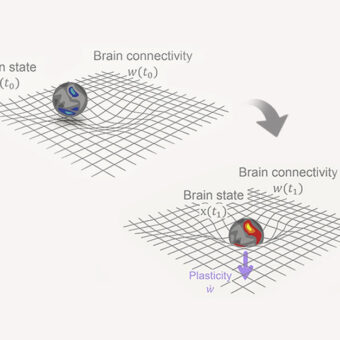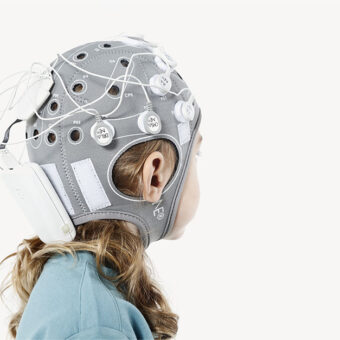In celebration of the 100 years of EEG, we are writing this post to honor the remarkable journey of electroencephalography. EEG has transformed our understanding of brain function, providing invaluable insights into neurological health and disease. This blog post explores the key milestones in the evolution of EEG devices, the pioneers who propelled the technology forward, and its expanding applications.
18th Century: Luigi Galvani’s Early Discoveries
Luigi Galvani (1737-1798), an eminent Italian scientist, was among the first to explore bioelectricity. His experiments demonstrated that electrical impulses could cause muscle contractions in a frog’s legs, laying the groundwork for the understanding of electrical activity in the nervous system.
1875: Richard Caton’s Animal Studies
Richard Caton (1842–1926), a Liverpool physician, recorded visual evoked electrical current variations and spontaneous current variations (EEG) from the exposed cortical surface of rabbits and monkeys using a Thomson reflecting galvanometer.
1890: Adolf Beck’s Foundational Work in Electroencephalography
Adolf Beck (1863-1942) began his studies on electrical brain activity under Napoleon Cybulski at the Jagiellonian University in Kraków. In 1890, Beck published his findings on continuous electrical oscillations and desynchronization following sensory stimulation. His work introduced new elements to the understanding of brain activity, such as evoked potentials and desynchronization, establishing foundational contributions to electroencephalography alongside Richard Caton and Hans Berger.
1924: Hans Berger’s Groundbreaking Discovery
Hans Berger, a German psychiatrist, recorded the first human EEG in 1924. Using a galvanometer, Berger identified the “alpha waves” and established a foundation for future EEG research.
1930s: Advances by Adrian and Matthews
In the 1930s, Edgar Adrian and B.H.C. Matthews refined EEG technology, making it more reliable and accessible. They demonstrated the correlation between electrical activity and brain function, which validated EEG as a tool for studying the brain.
1940s: Hallowell Davis and Herbert Jasper
Hallowell Davis and Herbert Jasper further improved EEG devices in the 1940s. Davis, alongside D.B. Lindsley, developed early clinical applications of EEG at Harvard Medical School, while Jasper’s work in Canada was instrumental in using EEG to locate epileptic foci.
1950s-1960s: Clinical Applications Expand
The 1950s and 1960s saw EEG becoming a standard tool in clinical neurophysiology. It was used to diagnose epilepsy, sleep disorders, and brain injuries. Innovations like the 10-20 system of electrode placement by Herbert Jasper standardized EEG recordings, enhancing their diagnostic accuracy.
1970s-1980s: Digital EEG and Computer Integration
The advent of digital technology in the 1970s and 1980s transformed EEG. Digital EEG allowed for better data storage, analysis, and signal processing. Computers enabled more sophisticated interpretations of EEG data, paving the way for modern neurodiagnostic tools.
1990s-2000s: High-Density EEG and Neuromodulation
In the 1990s, high-density EEG (HD-EEG) systems provided more detailed spatial resolution. Companies like Neuroelectrics have integrated HD-EEG with neuromodulation, offering personalized brain stimulation therapies. Devices such as Starstim and Enobio are now used in research and clinical settings worldwide, addressing conditions like epilepsy, neuropathic pain, and mood disorders.
2010s: Brain-Computer Interfaces, AI, and EEG
Beginning in 2013, DARPA funded Brain-Computer Interface (BCI) technology through the BRAIN initiative, supporting work from teams including the University of Pittsburgh Medical Center, Paradromics, Brown University, and Synchron. This research aims to develop direct communication pathways between the brain and external devices, revolutionizing neuroprosthetics and communication aids for individuals with disabilities.

The decade of the 2010s witnessed the integration of Artificial Intelligence (AI) with EEG data processing. Deep learning algorithms have significantly enhanced EEG data analysis by automating feature extraction and improving the accuracy of pattern recognition. This has expanded EEG applications in brain-computer interfaces, emotion recognition, and neurofeedback. AI’s ability to handle large datasets and complex patterns has made EEG a more powerful tool for both clinical and cognitive neuroscience
Applications and Future Directions
Today, the evolution of EEG is a testament to continuous development. EEGs are recorded invasively and noninvasively using fully computerized systems, integrating with other neuroimaging modalities such as fMRI. Delicate needle-type electrodes ensure precise recordings, highlighting the ongoing evolution in our exploration of neural activities within the human brain. The future of EEG lies in its potential to provide high temporal and spatial resolution, enhancing our ability to monitor and understand brain activity in real-time. This will make EEG an invaluable tool for both clinical and cognitive neuroscience.
The integration of Artificial Intelligence (AI) with EEG is paving the way for innovative applications. AI algorithms can analyze complex EEG data patterns, facilitating early diagnosis of neurological disorders, personalized treatment plans, and real-time brain-computer interfaces. This synergy between AI and EEG holds immense promise for advancing brain research and improving patient outcomes.
Conclusion
From Luigi Galvani’s early experiments to today’s advanced HD-EEG systems and BCIs, the evolution of EEG technology highlights a journey of remarkable progress. These advancements have deepened our understanding of brain function and opened new avenues for treating neurological disorders, promising a brighter future for brain health. This journey through the evolution of EEG showcases the relentless pursuit of knowledge and technological innovation that has shaped our understanding of the brain’s intricate electrical activities.
This journey through the evolution of EEG devices showcases how far we’ve come and hints at the exciting possibilities that lie ahead.
References:



